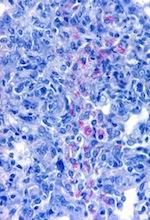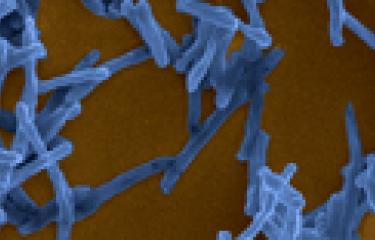Researchers from the Institut Pasteur and Inserm, in collaboration with researchers from the University of Pisa, have uncovered the key role played by specific proteins in the virulence of the mycobacterium responsible for tuberculosis, Mycobacterium tuberculosis. They were able to create an attenuated strain of the mycobacterium, which confers a better protection against tuberculosis than the BCG vaccine to mice. This finding represents a major step forward in the scientific quest to develop a new vaccine, more efficient at fighting the disease. This study is being published today in the scientific journal Cell Host & Microbe.
Press release
Paris, april 19, 2012

A study carried out by researchers from the Institut Pasteur and Inserm, coordinated by Dr Laleh Majlessi(1) and Pr Claude Leclerc(2) (Institut Pasteur/Inserm), in collaboration with Dr Roland Brosch (Institut Pasteur) and Dr Daria Bottai (University of Pisa), shows that a region of M. tuberculosis’ genome can be altered in order to obtain an avirulent strain of the bacterium in mice. This attenuated mycobacterium confers a strong protection against the onset of tuberculosis in a host organism.
The scientists were able to block, in the attenuated strain, the production and transport of certain proteins, called PE/PPE(3), linked to a specific region of the mycobacterium’s genome, the ESX-5 secretion system which can be found in all virulent strains of mycobacteria. They observed that the mice infected with the attenuated strain do not develop tuberculosis. Thus, they showed that the PE/PPE proteins produced by the ESX-5 system play a key role in the virulence of M. tuberculosis.
Furthermore, the scientists observed that the mice immunised with the attenuated strain are efficiently protected against infection by M. tuberculosis. This protection is correlated with the immune response specific to other PE/PPE proteins still present in this strain. Hence, the scientists demonstrated that the mutated strain of M. tuberculosis is a strong vaccine candidate against tuberculosis, triggering a more effective immune response than BCG in mice.
This major finding opens the door to new prospects for the development of a more efficient vaccine against the various pathologies caused by M. tuberculosis, especially against adult pulmonary tuberculosis. Numerous studies will need to be carried out before any of these research findings can be applied to man. The next step for the researchers of the Institut Pasteur, Inserm and the University of Pisa will be the creation of a strain in which other genetic mutations will be introduced in order to render it completely innocuous for man, with the aim to one day conduct clinical trials.
(1) Dr Laleh Majlessi, Immune Regulation and Vaccinology Unit (Institut Pasteur / Inserm U1041)
(2) Pr Claude Leclerc, director of the Immune Regulation and Vaccinology Unit (Institut Pasteur / Inserm U1041)
(3) The genes which encode the PE/PPE proteins belong to two large families that are unique to mycobacteria. They make up 10% of M. tuberculosis’ genome.
--
Illustration – © Institut Pasteur
Photograph of pulmonary tissues infected with Mycobacterium tuberculosis (in pink).
Source
Strong immunogenicity and cross-reactivity of Mycobacterium tuberculosis ESX-5 type VII secretion-encoded PE-PPE proteins predicts vaccine potential – Cell Host & Microbe – April 18, 2012
Fadel Sayes1,2, Lin Sun1,2,3, Mariagrazia Di Luca4, Roxane Simeone5, Nathalie Degaiffier1,2, Laurence Fiette6,7, Semih Esin4, Roland Brosch5, Daria Bottai4, Claude Leclerc1,2 and Laleh Majlessi1,2
1 Institut Pasteur, Unité de Régulation Immunitaire et Vaccinologie (Immune Regulation and Vaccinology Unit), Paris F-75015, France
2 Inserm U1041, Paris F-75015, France
3 Present address: Jiangsu Key Laboratory of Zoonosis, Yangzhou University, 225009 Yangzhou, Jiangsu, China
4 University of Pisa, Dipartimento di Patologia Sperimentale, Biotecnologie Mediche, Infettivologia ed Epidemiologia, 56100 Pisa, Italy
5 Institut Pasteur, Unité de Pathogénomique Mycobactérienne Intégrée (Integrated Mycobacterial Pathogenomics Unit), Paris F-75015, France
6 Institut Pasteur, Unité d'Histopathologie Humaine et Modèles Animaux (Human histopathology and animal models Unit), Paris F-75015, France
7 Université Versailles-Saint Quentin en Yvelines, Faculté de Médecine, DER Histologie, Versailles, France
Contacts
Institut Pasteur Press Office
Aurélie Perthuison – 01 45 68 89 28 – presse@pasteur.fr
Nadine Peyrolo – 01 45 68 81 47 – presse@pasteur.fr





